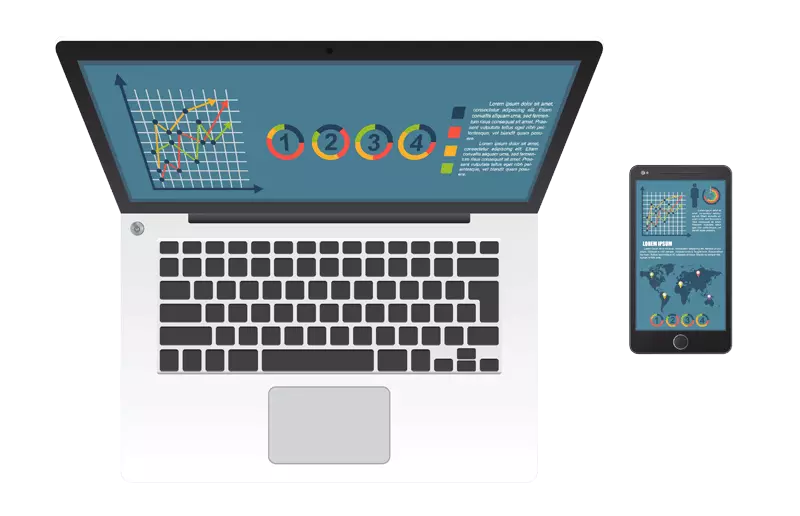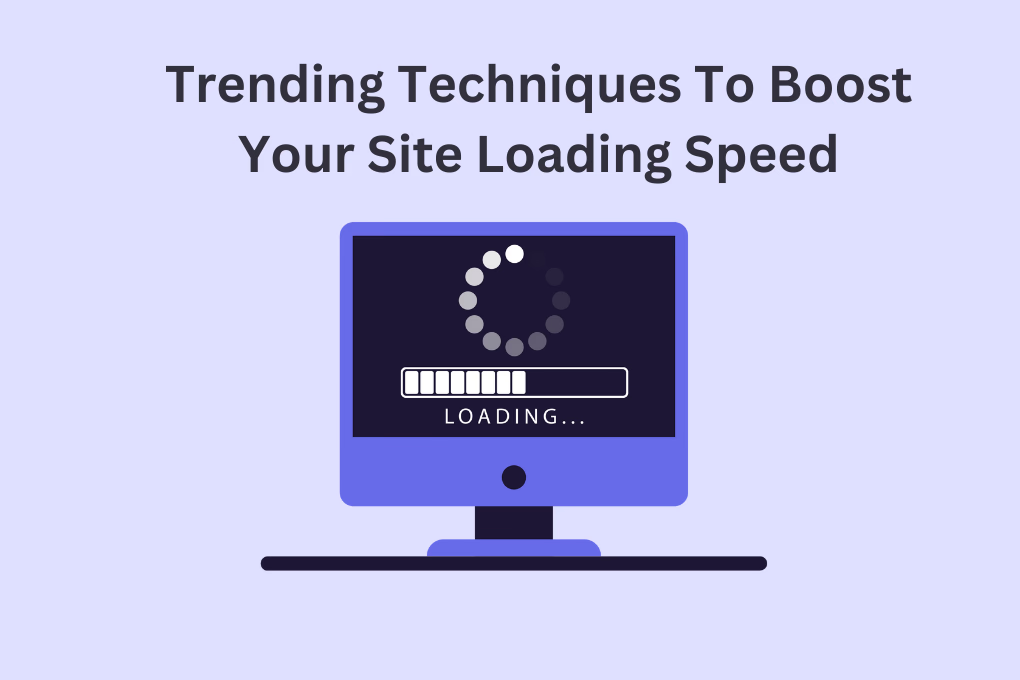In a world where people are increasingly accessing websites through mobile devices and desktops, it is important to understand the differences in page speed performance between mobile and desktop devices. Therefore, it is also crucial for you to improve mobile page speed and desktop page speed. This blog will provide a complete analysis of mobile and desktop page speed scores, as well as the impact of these differences on website performance.
PageSpeed scores are an important metric for website owners and developers, as they indicate how well a website performs in terms of loading time, page size, and other factors that can affect a user’s experience on a website. PageSpeed scores are an important factor for search engine rankings, as well as for providing an overall impression of website performance.
Over and above all, when considering page speed, it is important to consider the differences between mobile and desktop devices. For example, mobile devices typically have slower connections and slower processing power than desktop devices, which can lead to slower page load times. So, just read on and learn everything about page speed scores of mobile and desktops in detail.
Guide to Mobile and Desktop PageSpeed Scores
Mobile PageSpeed Scores
Mobile PageSpeed scores are a measure of the performance of a website when accessed from a mobile device. It is a score from 0 to 100 that reflects how quickly a page loads on a mobile device or how quickly users are able to interact with the page. A higher score is better, as it indicates a faster loading page with fewer delays.
Factors affecting Mobile PageSpeed Scores:
Minify CSS: Minifying CSS is the process of removing unnecessary code from the CSS code of your website. This reduces the size of the CSS file which makes it easier for browsers to read, thus reducing page loading time. Minifying CSS also helps reduce the number of requests sent to the server, which can further improve the mobile page speed.
Render Blocking: Render blocking is when a browser has to wait for a certain element to be loaded before it can start rendering the page. This can be caused by JavaScript and CSS files that are not optimized or are too large, causing a delay in the loading of the page. To reduce render blocking, minify the code or use code splitting and lazy loading techniques.
Core Web Vitals: Core Web Vitals are the metrics that Google uses to measure the speed, responsiveness, and visual stability of a website. The metrics are broken down into six categories: Largest Contentful Paint (LCP), First Input Delay (FID), Cumulative Layout Shift (CLS), First Contentful Paint (FCP), Input and Animation Performance (INP), and Time To First Byte (TTFB).
The LCP measures the time it takes for the largest content element on a page to appear in the viewport. The FID measures the time it takes for the first user interaction with the page to be processed. The CLS measures the amount of unexpected layout shifts that occur on a page. The FCP measures the time it takes for the first content element to appear in the viewport. The INP measures the performance of complex animations and interactions. The TTFB measures the time it takes for the browser to receive the first byte of response from the server. Hence, by monitoring and improving these metrics, you can improve the overall performance of your website.

Want to read this blog offline?
No worries, download the PDF version
now and enjoy your reading later…
 Download PDF
Download PDF Server Response Time: The server response time is a measure of how quickly your web server responds to requests from users. If your server is slow to respond, it can significantly reduce the speed of your website on mobile devices. Additionally, to optimize server response time, you should use a reliable and fast hosting provider. Additionally, you should look into caching and content delivery networks (CDNs) to help reduce the amount of data that has to be downloaded from your server.
Compression: Compressing files on your website can help reduce the amount of data that needs to be downloaded from your server. This can be done with several different techniques, such as gzip compression or image optimization. It can significantly improve page loading speeds on mobile devices, so it’s important to ensure that your website is taking advantage of these techniques.
Image Optimization: Images can take up a large portion of a website’s page load time. To ensure that your website is optimized for mobile devices, it’s important to optimize images before they are uploaded to the server. Images should be compressed, resized, and optimized for the right file format. This can drastically reduce page loading times and improve the overall user experience.
Javascript Optimization: Javascript is one of the most common elements of a website, but it can also be one of the biggest contributors to page loading times. To reduce the amount of Javascript on your website, you should minify your Javascript code and look into loading scripts asynchronously.
Tools to measure Mobile PageSpeed Scores
Google PageSpeed Insights: Google PageSpeed Insights is one of the most popular tools for analyzing and measuring mobile page speed scores. It offers a simple interface and gives businesses an insight into how their website performs on different types of devices. It also provides guidance on how to improve page loading times and suggests specific optimizations that can be made.

Pingdom: Pingdom is another effective tool for measuring mobile page speed scores. This tool offers detailed insights into how quickly your website loads across different devices and also provides recommendations on how to improve the page loading times. Additionally, Pingdom also offers a free page speed test that can be used to compare your website’s performance against competitors.
GTmetrix: GTmetrix is a comprehensive tool for analyzing and measuring mobile page speed scores. It provides businesses with detailed insights into the performance of websites on different types of devices and also provides recommendations on how to improve the page loading times. Additionally, GTmetrix also offers a free page speed test that can be used to compare your website’s performance against competitors.

Desktop PageSpeed Scores
Desktop PageSpeed Scores provide a score between 0 and 100 that indicate how quickly a webpage loads and how optimized the page is for desktop devices. The score is determined by running a variety of tests on the page’s code, assets, and structure to measure how quickly it can be rendered by a desktop browser. The higher the score, the better the page’s performance and these scores are determined on a per-page basis, so each page of a website may have a different score. Sites with higher scores tend to have faster loading times and improved user experience on desktop devices.
Factors affecting Desktop PageSpeed Scores
Image Optimization: When it comes to desktop page speed, images are one of the biggest culprits for slow page loading times. Images can be optimized by reducing the file size and making sure that the image dimensions match the space on the page. This will help reduce the amount of time it takes for the page to load.
Browser Cache: The browser cache can have a huge impact on desktop PageSpeed Scores. It stores certain files and information from a website, allowing the page to load faster on subsequent visits. It’s important to make sure that the browser cache is enabled and that it is configured properly.
File Compression: Compressing files can reduce their size, which can reduce the amount of time it takes for the page to load. This is especially important for larger files such as JavaScript and CSS files.
Minification: Minifying code can help reduce the amount of code on the page and can help improve the page loading time. Removing unnecessary code and comments, as well as combining multiple files into one file can help reduce the amount of code on the page.
Tools to measure Desktop PageSpeed Scores
Google PageSpeed Insights: Google PageSpeed Insights is one of the best tools available for measuring desktop PageSpeed scores. It uses Google’s own algorithms to measure your website’s performance, and provides detailed reports on how to improve the speed of your website. It can be used for both mobile and desktop devices, and it is free to use.

WebPageTest: WebPageTest is a free website performance analysis tool. It allows you to measure the performance of your website on a variety of real and virtual devices and browsers. The tool provides detailed performance metrics, including page speed scores, page load times, and a breakdown of resource loading times. It also provides recommendations on how to improve your website’s performance.
Pingdom: Pingdom is a website performance monitoring service. It allows you to monitor your website’s performance in real-time and provides data on page speed scores, page load times, and other performance metrics. This also offers optimization recommendations and tools to help you identify and resolve performance issues.

Comparison of Mobile and Desktop PageSpeed Scores
When considering page speed scores, it is important to understand the differences between mobile and desktop devices. Mobile devices typically have slower connections and slower processing power than desktop devices, which can lead to slower page load times. Additionally, mobile devices are often used in areas with low bandwidth, which can further slow down page load times.
The differences between mobile and desktop page speed scores can have a significant impact on website performance. For example, mobile users may be more likely to abandon a website if it takes a long time to load, while desktop users may be more patient and less likely to leave if a website takes a while to load. Additionally, slower page load times can result in decreased search engine rankings, as well as an overall impression of a website’s performance. Hence, in order to improve the performance of your website, it is necessary to improve google page speed score.
Unlock the Power of Quick-Load E-Commerce Experiences!
Fasten up Online StoreReasons for differences between Mobile and Desktop PageSpeed Scores
Mobile Devices are More Limited – Mobile devices are limited in terms of processing power and data speeds, which can negatively affect the PageSpeed score. This is due to the fact that mobile devices are usually not connected to a high-speed, broadband internet connection. Additionally, many mobile devices are running on outdated operating systems and hardware, which can further limit the speed at which content is delivered.
Different Screen Sizes – Mobile devices have typically smaller screens compared to desktops, which means that websites need to be optimized to fit the smaller screen size. This can also have an impact on the PageSpeed score, as the page may take longer to load or may not display properly. Additionally, mobile devices often have different resolutions and aspect ratios compared to desktop screens, which can also have an effect on the PageSpeed score.
Different Network Connections – Mobile devices often use different types of networks such as 3G, 4G, and 5G, which can also affect the PageSpeed score. 3G and 4G networks provide a higher data rate, but can be more prone to lags and buffering. On the other hand, 5G networks are much faster and may offer the best performance when it comes to PageSpeed.
Impact of Differences on Website Performance
The impact of differences in website performance can have a significant effect on user experience, website visibility, and overall website success. A poorly performing website may lead to slow loading times, broken links, and other issues that can have a negative effect on a user’s experience. Additionally, a website’s performance can affect its visibility in search engine rankings, making it harder for potential visitors to find and access the site. Finally, poor website performance can lead to decreased customer satisfaction, resulting in fewer customers and potential revenue. By focusing on performance optimization, website operators can help ensure that visitors have a positive experience when accessing the website and help increase website visibility, resulting in greater success.
Key Takeaway!
PageSpeed scores are an important metric for website owners and developers, as they indicate how well a website performs in terms of loading time, page size, and other factors that can affect a user’s experience on a website. When considering page speed scores, it is important to consider the differences between mobile and desktop devices. For example, mobile devices typically have slower connections and slower processing power than desktop devices, which can lead to slower page load times. This blog has provided a comparison between mobile and desktop page speed scores, as well as an explanation of the differences and the impact of these differences on website performance.
Experience lightning-fast loading speeds across all browsers on both mobile and desktop devices with Website Speedy! Our easy to use tools optimize images, core web vitals, and other assets on your website for improved performance! Check it out and make the most of it!
March 28, 2023
Leave a Comment
















































